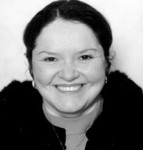 For me, the most memorable impacts of Hurricane Sandy arrived at my door after the floodwaters receded. In Newark, New Jersey where I work as a pediatric pulmonologist, the floods gave way to a rapid growth of mold and other lung irritants, and my patients are feeling the strain with every breath they take.
For me, the most memorable impacts of Hurricane Sandy arrived at my door after the floodwaters receded. In Newark, New Jersey where I work as a pediatric pulmonologist, the floods gave way to a rapid growth of mold and other lung irritants, and my patients are feeling the strain with every breath they take.
In these predominantly Latino and minority neighborhoods, I am energized by our communities’ resilience and also daunted by what is to come.
Gov. Chris Christie has provided strong leadership during this crisis and has done a wonderful job. Kudos also to Newark Mayor Cory Booker for his energetic and proactive response to the aftereffects of Sandy. Unfortunately in many communities in Jersey, there needed to be more preparedness and a better game plan in the future for dealing with these kinds of emergencies.
Within days of the storm, the mold and fire-related air pollution in Newark led to a surge in asthma attacks among my patients, as well as other viral respiratory illnesses such as Influenza, respiratory syncytial virus in infants and children. Temporary shelters often serve as breeding grounds for respiratory infection, which can be especially serious for patients with asthma or other chronic respiratory illnesses. In addition, the rise in mold can be a trigger for asthma and a problem for people who have weak immune systems.
Hurricane Sandy has presented us with a potentially lifesaving opportunity to gauge our ability to protect human health in a changing world. As New York Mayor Michael Bloomberg pointed out after the storm: “Our climate is changing, And while the increase in extreme weather … may or may not be the result of it, the risk that it may be — given the devastation it is wreaking — should be enough to compel all elected leaders to take immediate action.”
As someone who treats those affected by the impacts, I couldn’t agree more.
In a warmer, more tropical world, storms similar to Sandy will be increasingly frequent and intense, as will the accompanying risks of drowning, injuries, waterborne diseases, respiratory illnesses and post-traumatic stress. Health professionals must be at the forefront of helping us navigate this “new normal” and protecting vulnerable communities even as we take urgent steps to reduce climate change.
As we prepare our health systems to confront climate change, we must take into account those patients with chronic diseases, especially those who require the use of medical equipment. Many of my patients with chronic respiratory illnesses who may be dependent on a ventilator and/or oxygen did not have a solid backup plan for when their ventilators lost power or instructions for parents to get oxygen supply. This is even more serious for older individuals who may be more isolated, and must be identified and prepared in advance with battery packs or access to backup generators.
Too often, our national conversation on climate is dominated by dollars and degrees. Hurricane Sandy reminded us all that we are really talking about our households and our health. As we face a new chapter politically and demographically, I hope that health professionals of all races and political leanings will help bring the conversation back to reality: Our task is to leave a more stable and healthier world to the next generation, and we need to start now.
This article originally appeared on NJ Star Ledger.
Evelyn Montalvo-Stanton is a pediatric pulmonologist and collaborates often with Voces Verdes, the national independent, nonpartisan voice of Latino leaders for the environment.

Recent Comments